Don’t Skip a Step: Make Detection Part of the Surgical Routine to Avoid Undiagnosed Ureteral Injuries
The most common injury is iatrogenic ureteral trauma4
The risk of ureteral injuries can be increased by:
Patient Comorbidities5,6
-
Obesity
-
Previous laparotomic pelvic surgery
-
Pelvic adhesions
-
Large pelvic masses
-
Increased uterine size
Surgery Parameters
-
Laparoscopic HYS vs abdominal7
-
Surgeons performing fewer surgeries (≤50 HYS cases per year) compared to higher volume surgeons8
-
Longer surgery time5,6
-
Intraoperative bleeding5,6
Proactively detecting ureteral injury by using intraoperative cystoscopy with visualization agents is a critical — yet underused — step in patient care.
AAGL, AUGS, and AUA guidelines recommend cystoscopies to improve intraoperative identification of ureteral injury5-8
AAGL=American Association of Gynecological Laparoscopists; AUA=American Urological Association; AUGS=American Urogynecologic Society; HYS=Hysterectomy.
BLUDIGO® (indigotindisulfonate sodium injection, USP)
INDICATIONS AND USAGE
BLUDIGO® is a diagnostic dye indicated for use as a visualization aid in the cystoscopic assessment of the integrity of the ureters in adults following urological and gynecological open, robotic, or endoscopic surgical procedures.
IMPORTANT SAFETY INFORMATION
CONTRAINDICATIONS
BLUDIGO® is contraindicated in patients with known hypersensitivity to indigotindisulfonate or any of its components.
WARNINGS AND PRECAUTIONS
Cardiovascular Reactions: Severe or life-threatening cardiovascular reactions including cardiac arrest, arrhythmia, asystole, atrioventricular block second degree, hypotension, elevation in blood pressure, bradycardia, and tachycardia have been reported. Closely monitor blood pressure and cardiac rhythm during and following the BLUDIGO® injection. Interrupt administration if reactions are observed.
Hypersensitivity Reactions: Serious anaphylactic reactions with hypotension, dyspnea, bronchospasm, urticaria, or erythema have been reported. Monitor patients for anaphylactic reactions and have emergency equipment and trained personnel readily available.
Interference with Oximetry Measurements: Anesthesiologists should be aware of the potential for artifactual reduction in SpO2 when anesthetized patients are administered BLUDIGO®.
USE IN SPECIFIC POPULATIONS
Renal Impairment: BLUDIGO® is not recommended for use in patients with eGFR<30 mL/min.
Pediatric Use: The safety and effectiveness of BLUDIGO® have not been established in pediatric patients.
Pregnancy and Lactation: Please consult the Full Prescribing Information before using BLUDIGO® in a patient that is lactating, pregnant, or may be pregnant.
RECOMMENDED DOSAGE
The recommended dose for BLUDIGO® is 5 mL given intravenously over 1 minute.
IMPORTANT ADMINISTRATION INSTRUCTIONS
- Monitor blood pressure and cardiac rhythm during and following the injection.
- Use immediately after opening ampule.
- Withdraw the contents of the ampule through a 5 micron or smaller filter straw/filter needle to ensure that the withdrawn solution contains no particulates. The withdrawn solution should be inspected visually for particulate matter and discoloration prior to administration.
- Do not administer with infusion assemblies used with other diluents or drugs.
- Discard any unused portion.
ADVERSE REACTIONS
Clinical Trial Experience: The most common adverse reactions (1%) associated with BLUDIGO® in clinical trials were: constipation, nausea, vomiting, abdominal pain, pyrexia, ALT increase, and dysuria.
Postmarketing Experience: The following adverse reactions have been identified following the use of indigotindisulfonate sodium injection products:
- Cardiovascular disorders: cardiac arrest, arrhythmia, asystole, atrioventricular block second degree, hypotension, elevation in blood pressure, bradycardia, tachycardia
- General disorders and administration site conditions: injection site discoloration
- Immune system disorders: anaphylactic reactions with hypotension, dyspnea, bronchospasm, urticaria, erythema
Please see the full Prescribing Information for additional Important Safety Information.
To report SUSPECTED ADVERSE REACTIONS, contact PROVEPHARM Inc at 1–833-727-6556 or FDA at 1-800-FDA-1088 or www.fda.gov/medwatch.
References: 1. Chalya PL, Massinde AN, Kihunrwa A, Simbila S. Iatrogenic ureteric injuries following abdomino-pelvic operations: a 10-year tertiarycare hospital experience in Tanzania. World J Emerg Surg. 2015;10:17. Published 2015 Mar 12. doi:10.1186/s13017-015-0011-z. 2. Vakili B, Zheng YT, Loesch H, Echols KT, Franco N, Chesson RR. Levator contraction strength and genital hiatus as risk factors for recurrent pelvic organ prolapse. Am J Obstet Gynecol. 2005;192(5):1592-1598. doi:10.1016/j.ajog.2004.11.022. 3. Gilmour DT, Das S, Flowerdew G. Rates of urinary tract injury from gynecologic surgery and the role of intraoperative cystoscopy. Obstet Gynecol. 2006;107(6):1366-1372. doi:10.1097/01.AOG.0000220500.83528.6e. 4. Cohen SA, Carberry CL, Smilen SW. American Urogynecologic Society Consensus Statement: Cystoscopy at the Time of Prolapse Repair. Female Pelvic Med Reconstr Surg. 2018;24(4):258-259. doi:10.1097/SPV.0000000000000529. 5. Jacob GP, Vilos GA, Al Turki, et al. F. Ureteric injury during gynaecological surgery – lessons from 20 cases in Canada. Facts Views Vis Obgyn. 2020;12(1):31-42. 6. Ibeanu OA, Chesson RR, Echols KT, Nieves M, Busangu F, Nolan TE. Urinary tract injury during hysterectomy based on universal cystoscopy. Obstet Gynecol. 2009;113(1):6- 10. doi:10.1097/AOG.0b013e31818f6219. 7. Pickett CM, Seeratan DD, Mol BWJ, et al. Surgical approach to hysterectomy for benign gynaecological disease. Cochrane Database System Rev. 2023;8(8):CD003677. doi:10.1002/14651858.CD003677.pub6. 8. Vree FEM, Cohen SL, Chavan N, et al. The impact of surgeon volume on perioperative outcomes in hysterectomy. JSLS. 2014;18(2):174-181. do i:10.4293/108680813X13753907291594.





